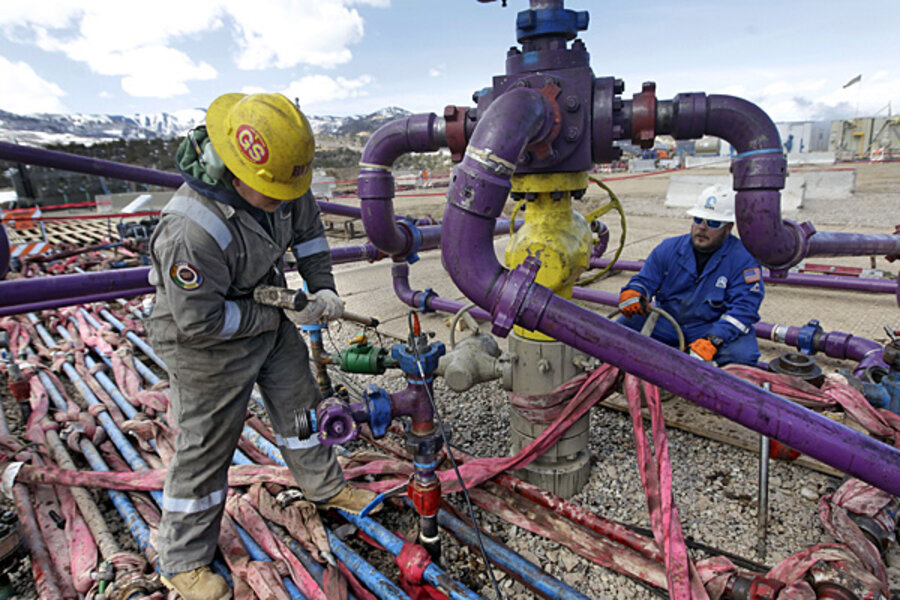When natural gas prices rise, who loses?
Loading...
Chemicals and Fertilizer Industries
In last week’s post Who Wins from Rising Natural Gas Prices?, I discussed the sectors that would benefit from rising natural gas prices. This week, let’s talk about the potential losers.
Natural gas is an important feedstock for the chemicals and fertilizer industries, so higher prices could pressure those sectors. Oil companies with significant chemical operations could also see this business segment take a hit, but based on ExxonMobil’s (NYSE: XOM) advocacy of liquified natural gas (LNG) exports, it clearly believes the net effect of rising natural gas prices on the company would be positive.
Dow Chemical (NYSE: DOW), on the other hand, has come out strongly against LNG exports because of the potential cost to its own business and that of other heavy users of natural gas. Ironically, last week the Department of Energy granted a permit to a facility called Freeport LNG — in which Dow owns a 15% stake. Dow’s answer to that is that they invested in the facility when it was supposed to be an LNG import facility.
Biofuels Sector
But the risks to the chemicals and fertilizer industries are well-known. What isn’t as well-known is the risk from higher natural gas prices to the biofuels sector. This may be counterintuitive, since renewables like wind and solar power become more competitive as natural gas prices increase.
The difference (unappreciated by many biofuels investors) is that many biofuel technologies rely heavily on natural gas. Corn ethanol production, for instance, is dependent on process steam that is mainly produced from natural gas. And since natural gas is also a key component in fertilizer, higher natural gas prices tend to drive up fertilizer prices and eventually corn prices, subjecting ethanol producers to a double whammy.
But the advanced biofuel industry may be at an even greater risk, since it hasn’t yet become economically competitive.
Take KiOR (Nasdaq: KIOR), for instance. KiOR’s technology starts with a fast pyrolysis process that heats up biomass rapidly to break it down. KiOR uses a common oil refining process called Fluid Catalytic Cracking (FCC) technology for the pyrolysis step in a process they call Biomass Fluid Catalytic Cracking (BFCC). The end product is partially upgraded pyrolysis oil (still very different from crude oil), which is further upgraded to gasoline and diesel blendstocks via another common oil refining process called hydrotreating.
The entire process is heavily dependent on hydrogen from natural gas. Based on my calculations from KiOR’spublished statements on wood feedstock inputs (500 bone dry tons) and gasoline, diesel, and fuel oil outputs (13 million gallons per year), as much as half of the energy content of the produced fuel has to be derived from natural gas.
Natural Gas Laundering
As an aside, even though half of the BTUs are derived from natural gas, the fuel that is produced qualifies as 100% renewable fuel, and therefore receives tax credits as 100% renewable fuel. One might think of this as natural gas laundering, where the natural gas “becomes” renewable by being combined with biomass. And because this natural gas is being provided by companies like ExxonMobil, and is still relatively cheap due to the new supplies brought about by the fracking revolution, many advanced biofuel producers are ironically dependent upon both ExxonMobil and the fracking revolution.
Thus, KiOR — and certain other advanced biofuel producers — have a very high sensitivity to natural gas prices. This is another reason to shy away from investing in KiOR, which I have been advising investors to dosince 2011. This has proven to be good advice, as the company’s share price has fallen 70 percent since mid-2011.
Meanwhile, KiOR recently announced a net loss of $31.3 million for the first quarter of this year. Several analysts surprisingly (to me) reiterated ratings of “Overweight” or “Outperform” on the company in response to the results, seemingly oblivious to the company’s sensitivity to higher natural gas prices. Even more surprising is that one analyst — Pavel Molchanov from Raymond James – reiterated the “Outperform” rating that he first made on August 15, 2011. How well has KiOR “outperformed” since he made this initial recommendation? The share price has fallen over 60%, and yet he reiterated his “Outperform” rating.
In my opinion many of the analysts covering these advanced biofuel companies don’t have a firm enough grasp on the technology or the risk factors involved. As a result, their clients end up with steep losses.
Conclusions
Thus, if you believe that natural gas prices will retain strength in the coming months, the companies at most risk are chemical companies (including fertilizer manufacturers) and biofuel companies — particularly advanced biofuel companies engaged in hydrotreating.
Link to Original Article: Who Loses from Rising Natural Gas Prices?







